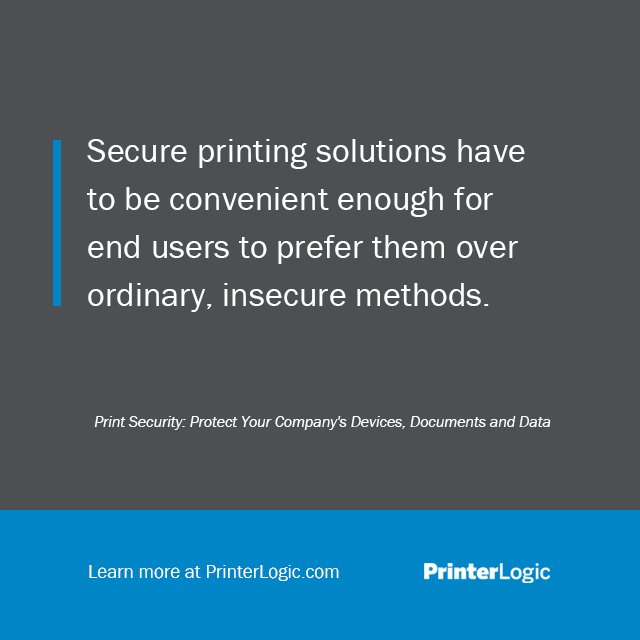
By Devin Anderson – With the massive proliferation of information in today’s workplaces, protecting the sensitive data among that information becomes all the more important. We can put passwords on digital documents, encrypt folders, install VPNs to limit external access to our organization’s internal networks. But print security remains a challenge for two important reasons:
- Printing is physical.Digital documents can be locked away. We can restrict who’s able to access them and monitor when they do. Secure printing is another story. All too often, printed documents are left exposed for anyone to see—not just on someone’s desk, but right there in the printer’s output tray! The user prints them, gets waylaid or distracted, and meanwhile the printed pages are visible to passersby and other users who are retrieving their documents.
Maybe that’s not the end of the world when it’s a simple meeting agenda or a routine letter. But what if that document contains information on a quiet hiring decision? Or a top-secret project? Or an executive-level issue? Whether intentionally or accidentally, unauthorized guests or employees could come across that information and either complicate or seriously compromise matters. Secure printing solutions help to guard against those kinds of breaches and ensure that sensitive documents are only seen by the eyes they were intended for.
- Security in printing is only as strong as our end users.Even today, after all we’ve been told about the importance of security, the top login passwords still tend to be “password,” “qwerty,” “123456” or the user’s first name. Some would say this comes down to laziness, but it’s more a matter of convenience. When you’re getting back to your desk and ready to start work, do you really want to type a long string of random numbers, letters and symbols, or do you want something that takes a short amount of time to enter?